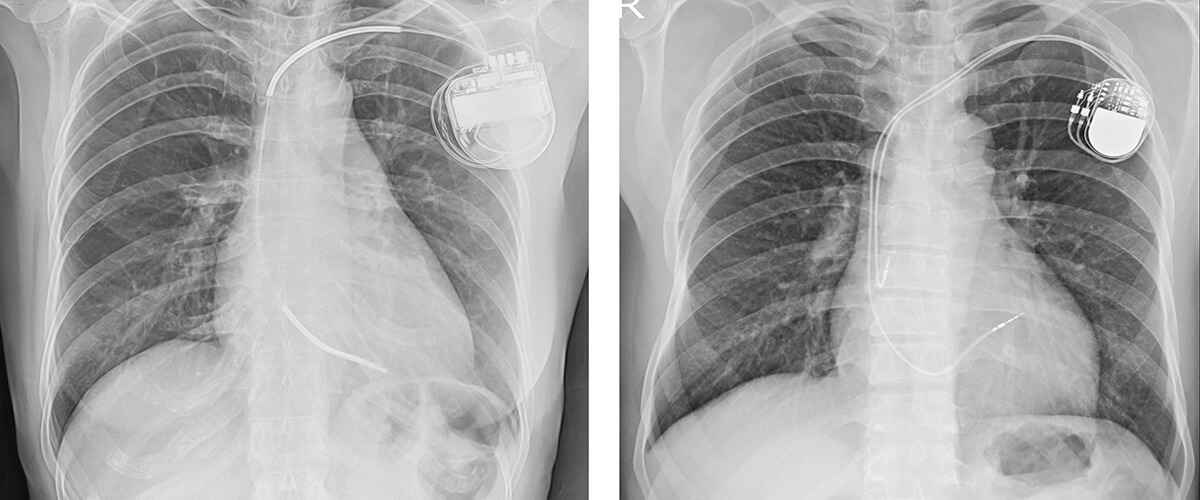An implantable cardioverter-defibrillator (ICD) is a small battery-operated device that physicians use to control life-threatening electrical problems with the heart. It can regulate an irregular heartbeat (arrhythmia) or slow down a fast heartbeat (tachycardia).
An ICD consists of two parts: a pulse generator and one or more wires called leads. The generator is inserted under the skin just below the collarbone. The lead wire(s) are threaded through a major vein and connected to specific locations in your heart.
Once connected, the ICD monitors your heartbeat and corrects an irregular or fast rhythm. It uses pacing to restore a normal heartbeat, or a shock (defibrillation) to reset the rhythm and prevent cardiac arrest. The ICD also records rhythm and correction information for your physician’s review.
A newer device called an S-ICD (subcutaneous ICD) is designed to give electrical shocks but no pacing of the heart rhythm. It is inserted on the left side of the chest. It attaches to the breastbone and is not connected to the heart directly.

WHAT TO EXPECT
Before the procedure, you will have an intravenous (IV) line started in a vein, usually in your hand or arm. This will be used to inject intravenous fluids and medications during your procedure. An anesthesiologist or nurse anesthetist will provide light sedation thru IV to help you relax as well as a local anesthetic at the surgical site as needed.
Your physician will make a small needle puncture at the insertion site in the chest. He or she will insert the lead wire(s) through the blood vessel and gently guide them into the heart. (As above, for an S-ICD, the generator will be placed under the skin on the left side of your chest instead, and the wires will be attached to your breastbone.)
You will need to remain very still for this part of the procedure. When the lead(s) are connected, your physician will test them. He may use video x-ray to check the location.
Your physician will then attach the lead wire(s) to the generator and slip the generator under your skin through the incision.
Your physician will then withdraw the catheter, and you will be taken to a recovery room until the anesthesia wears off. You will be discharged home the same day.
